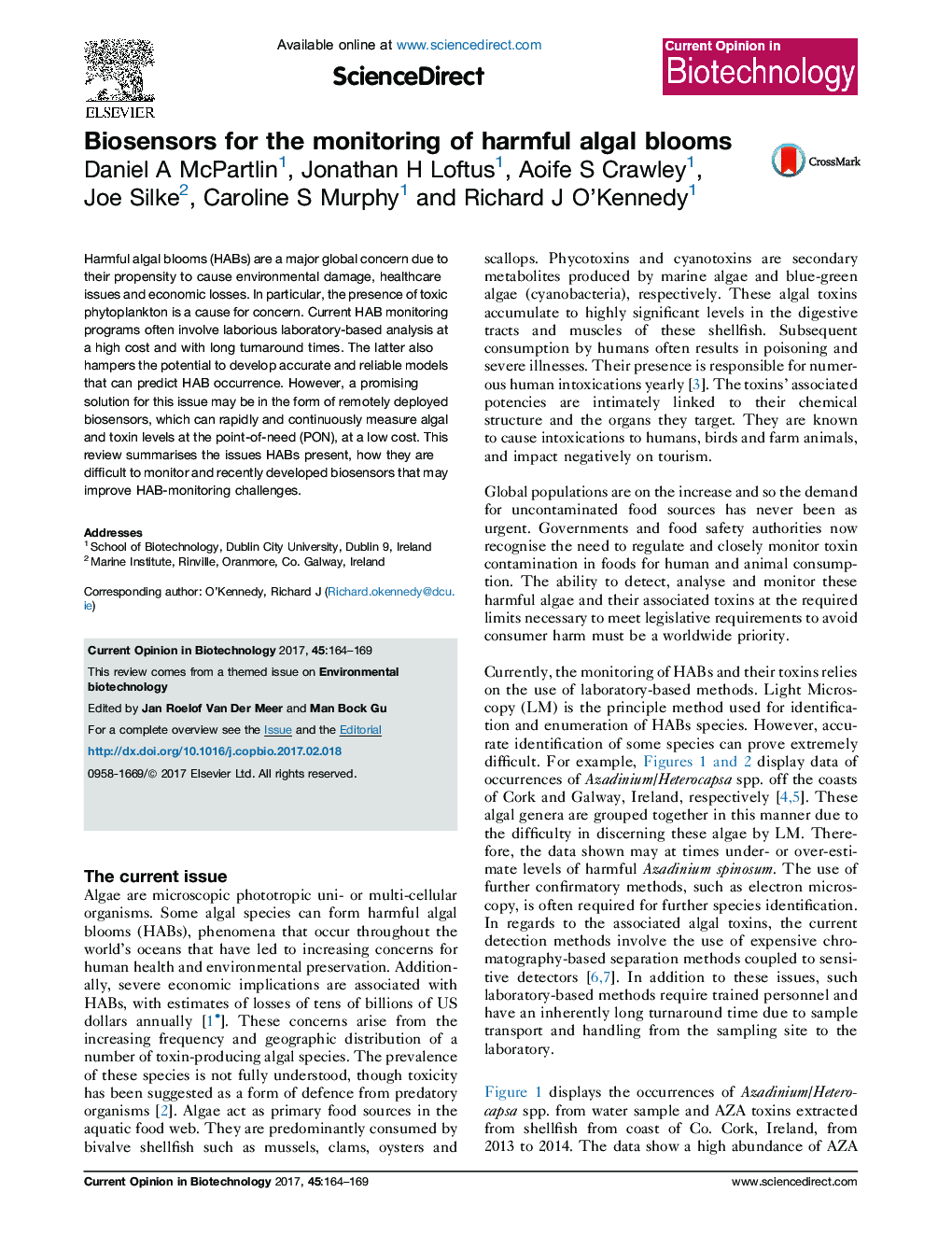| Article ID | Journal | Published Year | Pages | File Type |
|---|---|---|---|---|
| 6451691 | Current Opinion in Biotechnology | 2017 | 6 Pages |
â¢Harmful algal blooms (HABs) cause environmental damage and healthcare issues.â¢Current HAB monitoring involves laborious laboratory-based analysis.â¢Biosensors could rapidly and continuously measure algal and toxin levels.â¢Recently developed biosensors may address HAB-associated monitoring challenges.
Harmful algal blooms (HABs) are a major global concern due to their propensity to cause environmental damage, healthcare issues and economic losses. In particular, the presence of toxic phytoplankton is a cause for concern. Current HAB monitoring programs often involve laborious laboratory-based analysis at a high cost and with long turnaround times. The latter also hampers the potential to develop accurate and reliable models that can predict HAB occurrence. However, a promising solution for this issue may be in the form of remotely deployed biosensors, which can rapidly and continuously measure algal and toxin levels at the point-of-need (PON), at a low cost. This review summarises the issues HABs present, how they are difficult to monitor and recently developed biosensors that may improve HAB-monitoring challenges.
Graphical abstractDownload high-res image (121KB)Download full-size image
